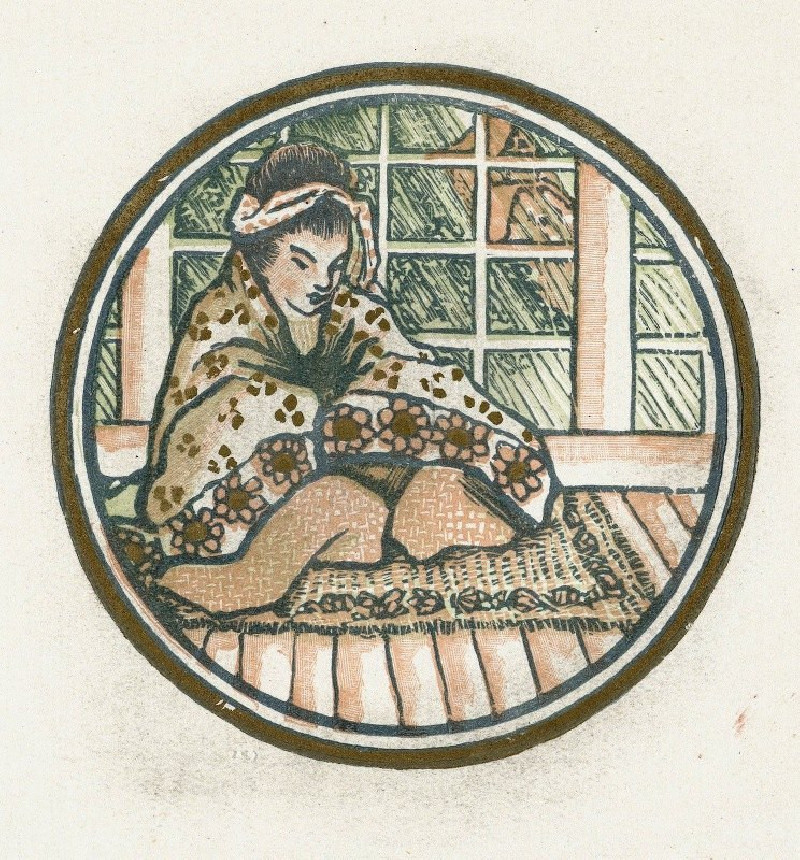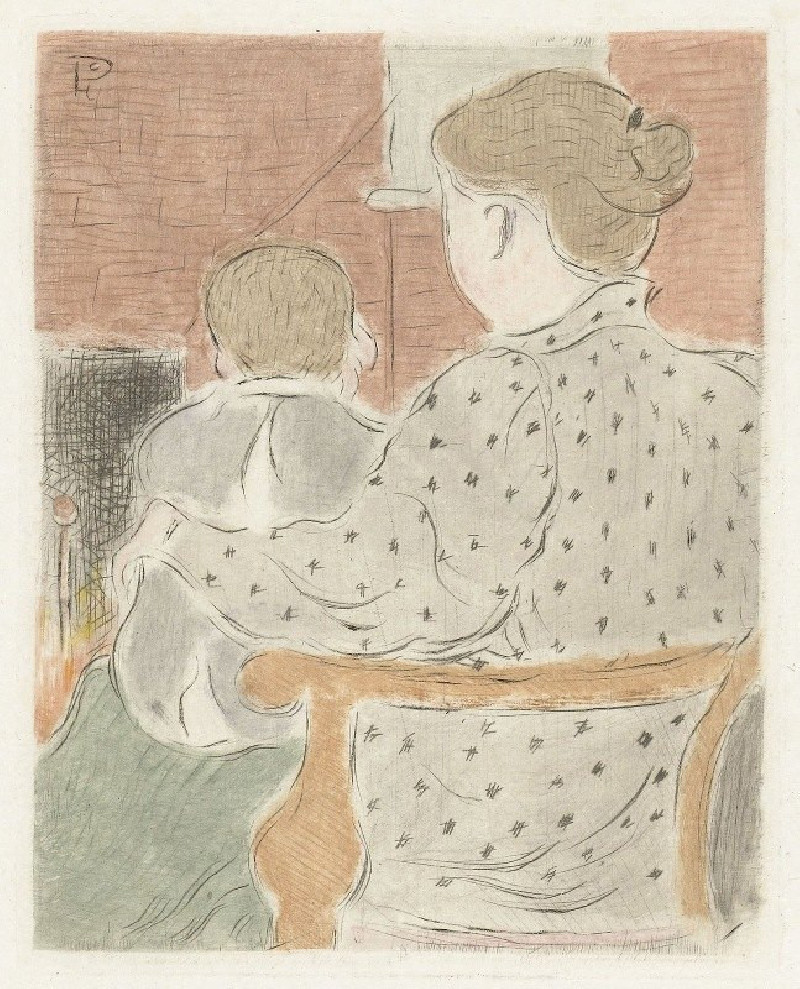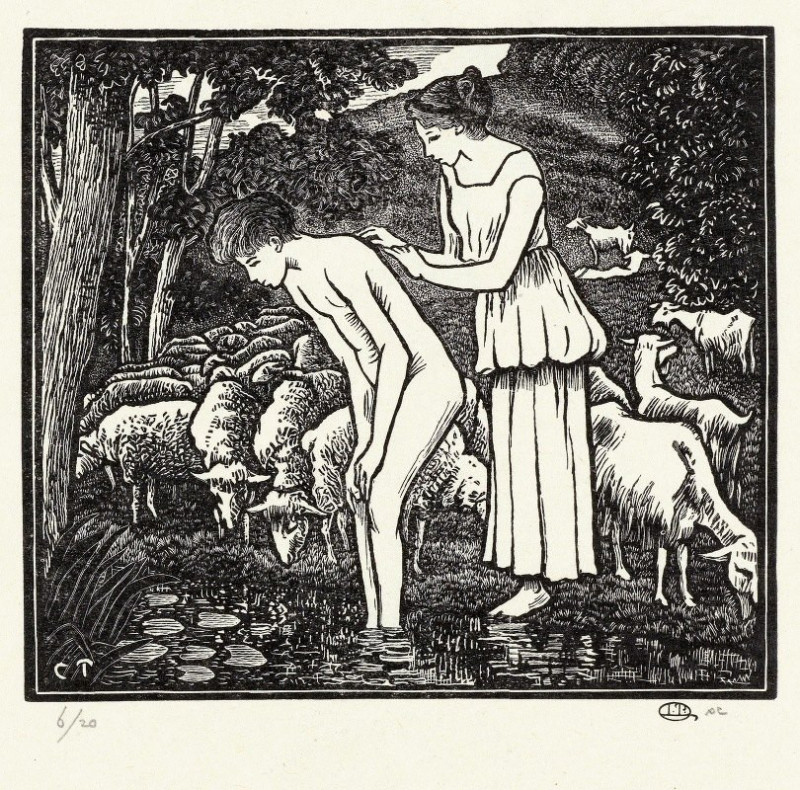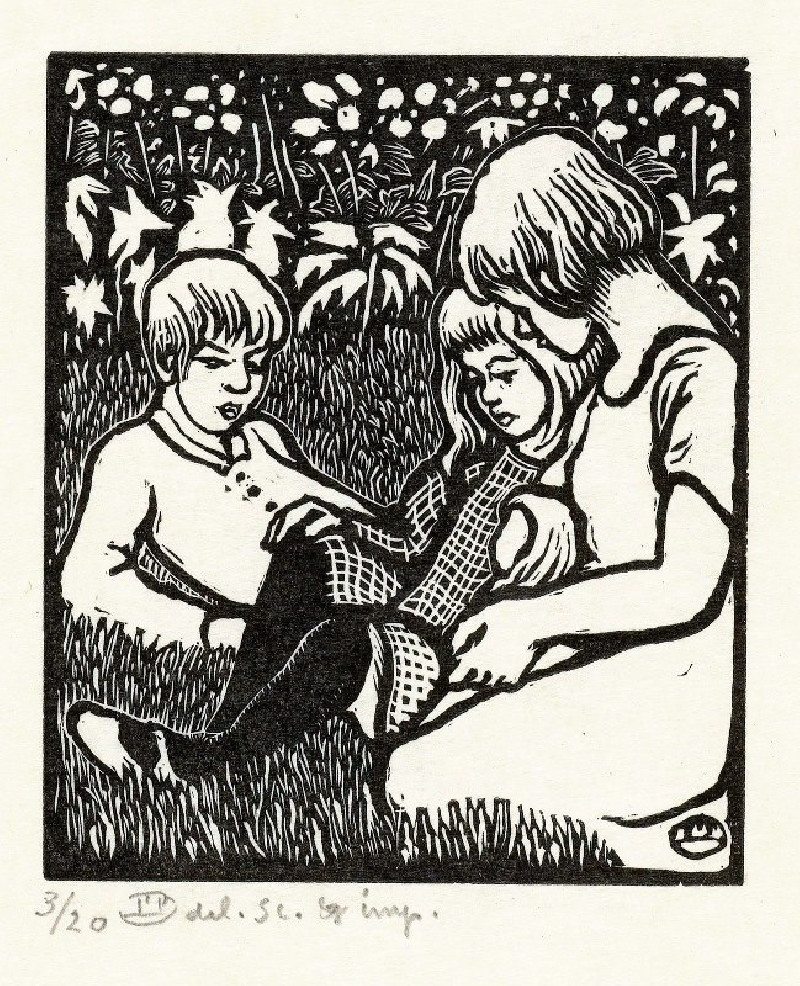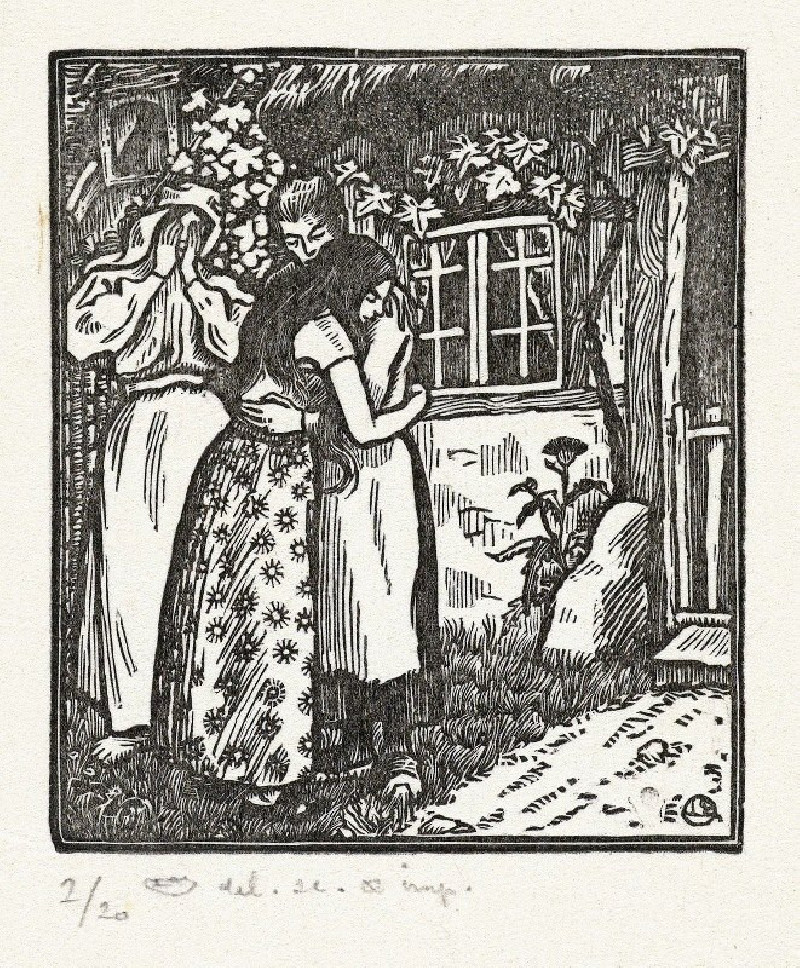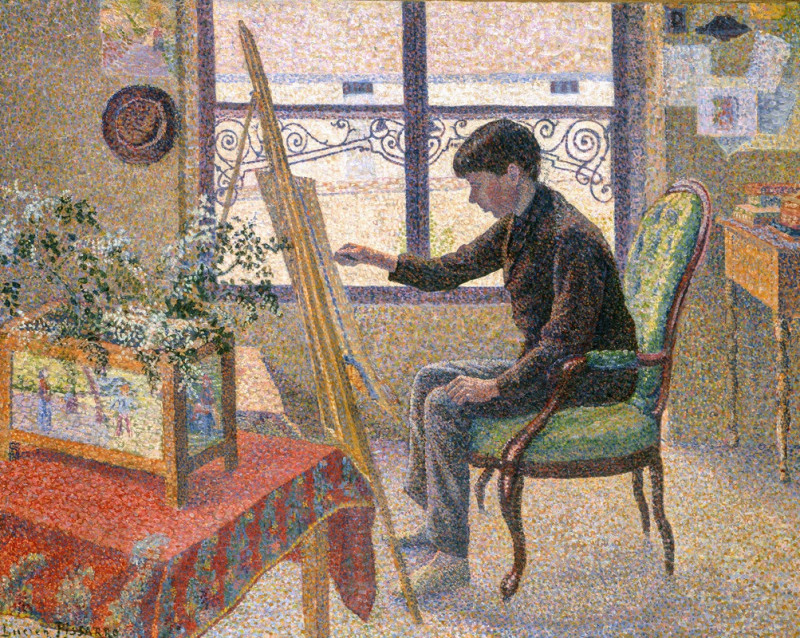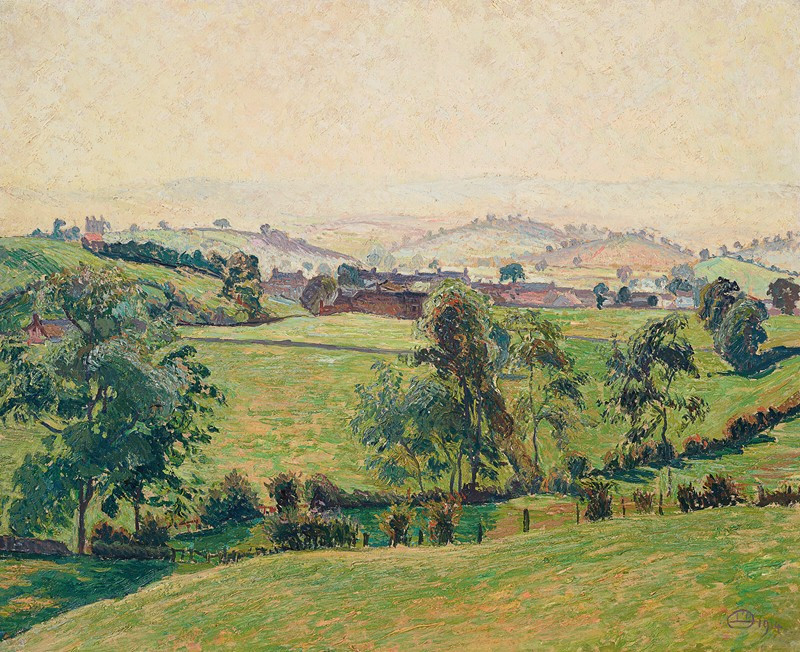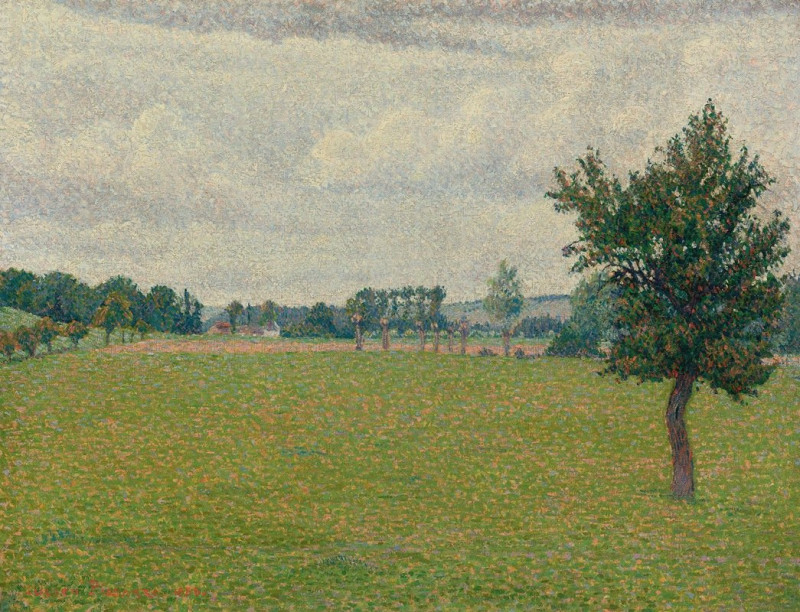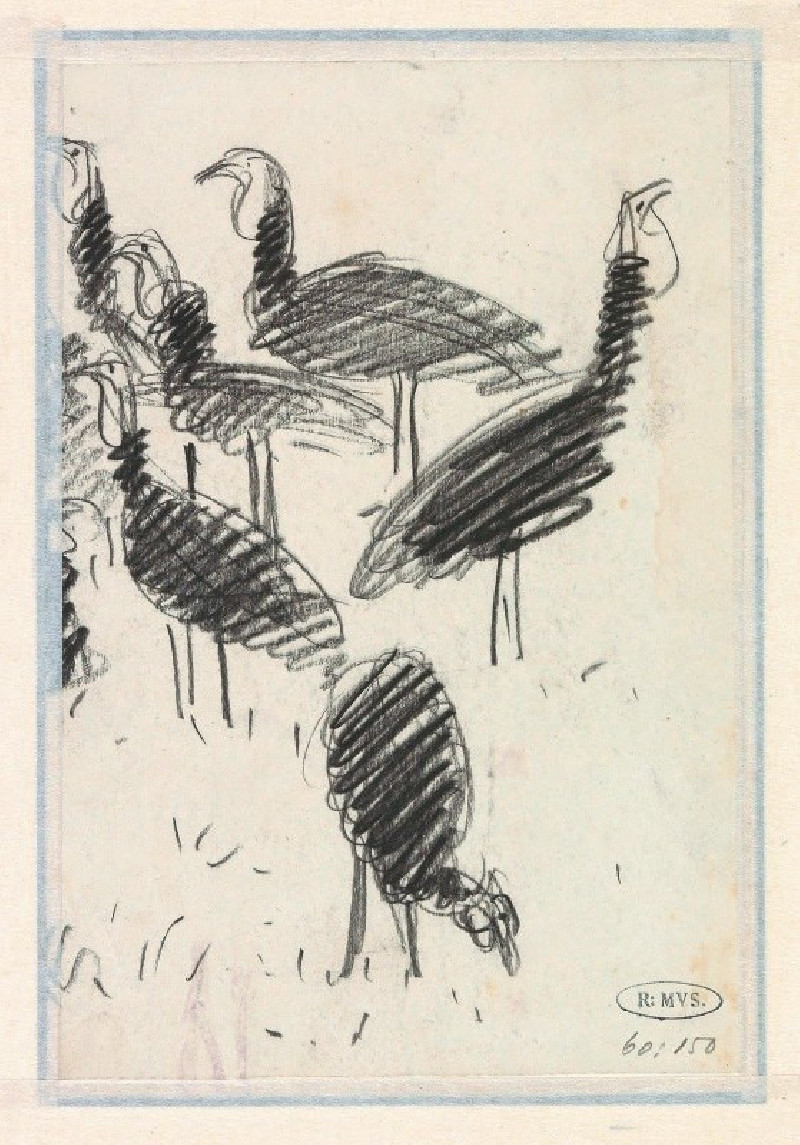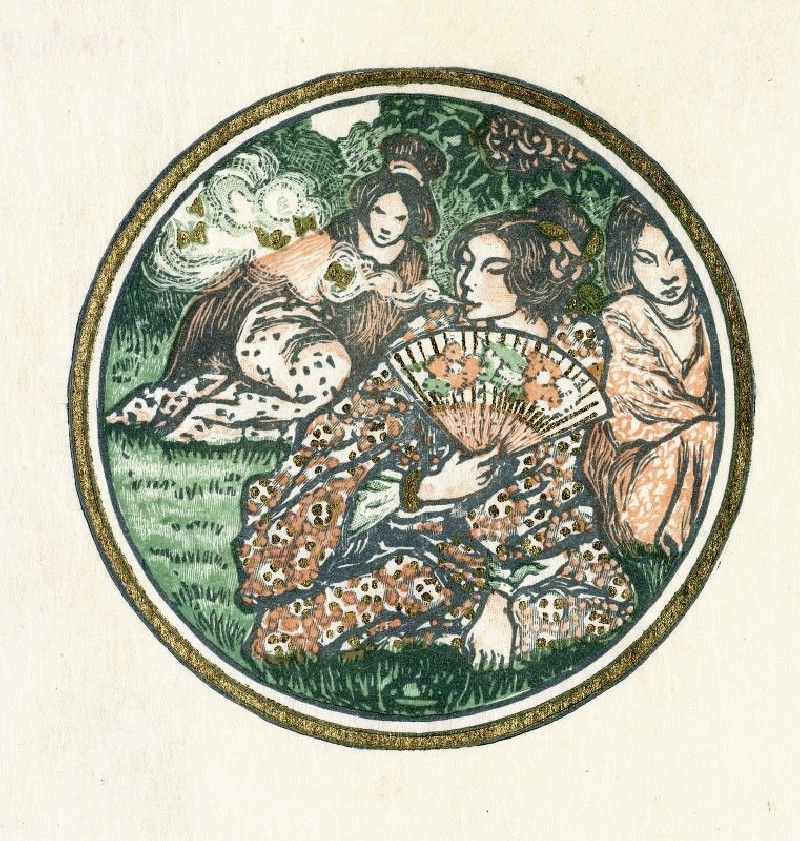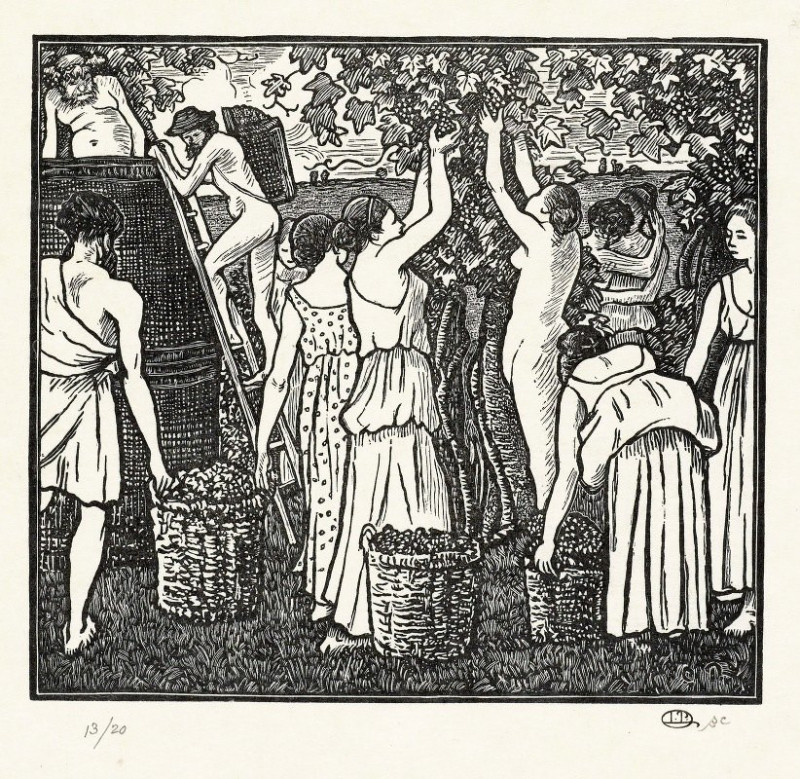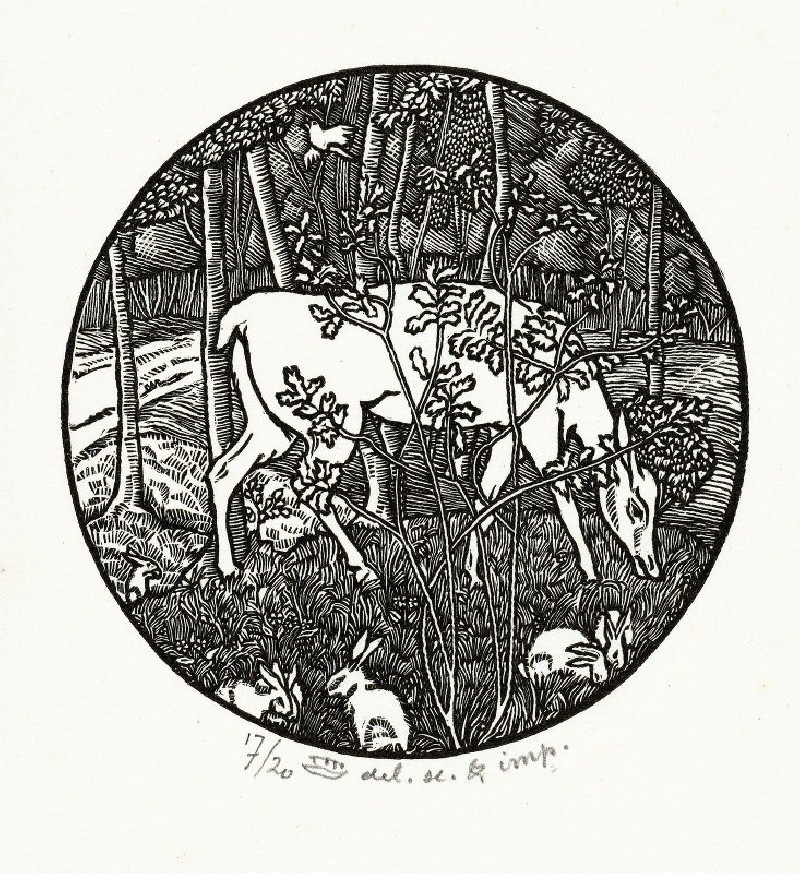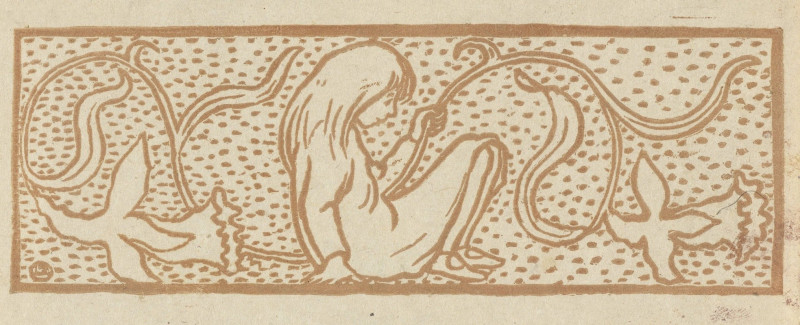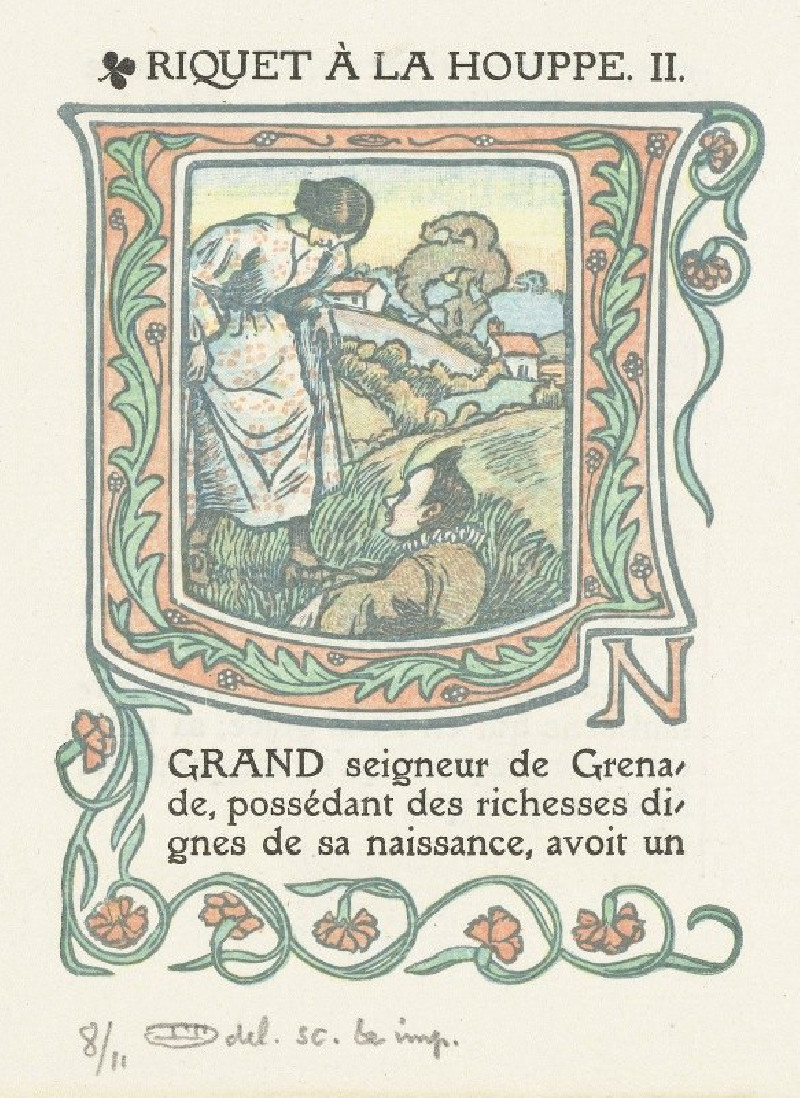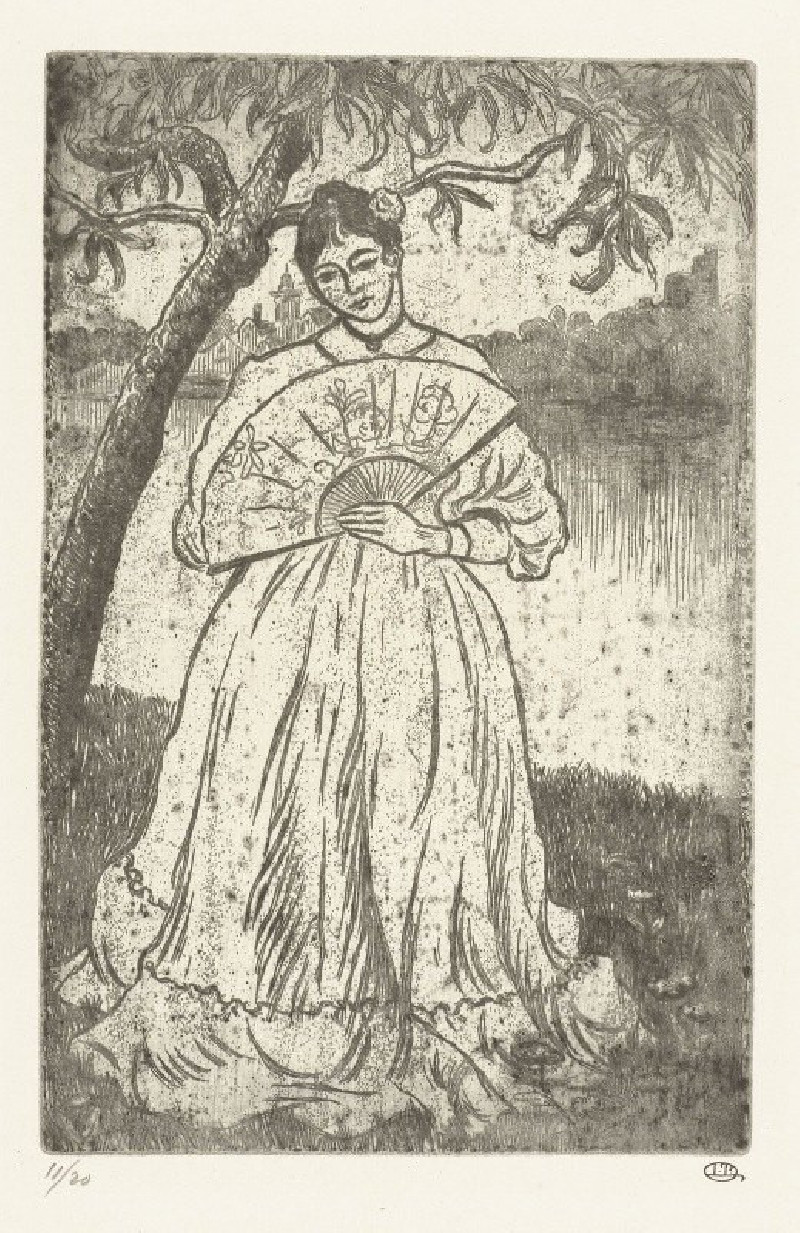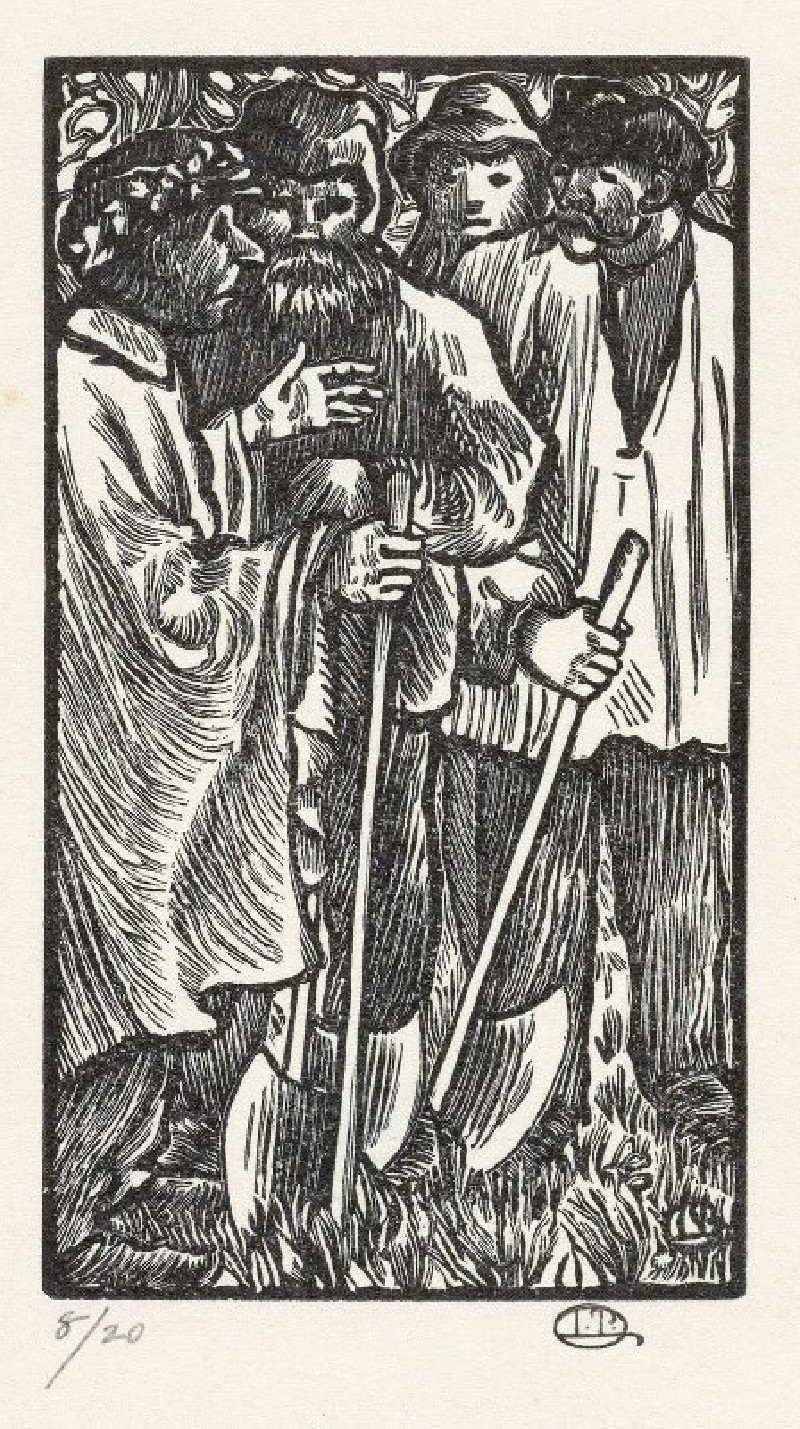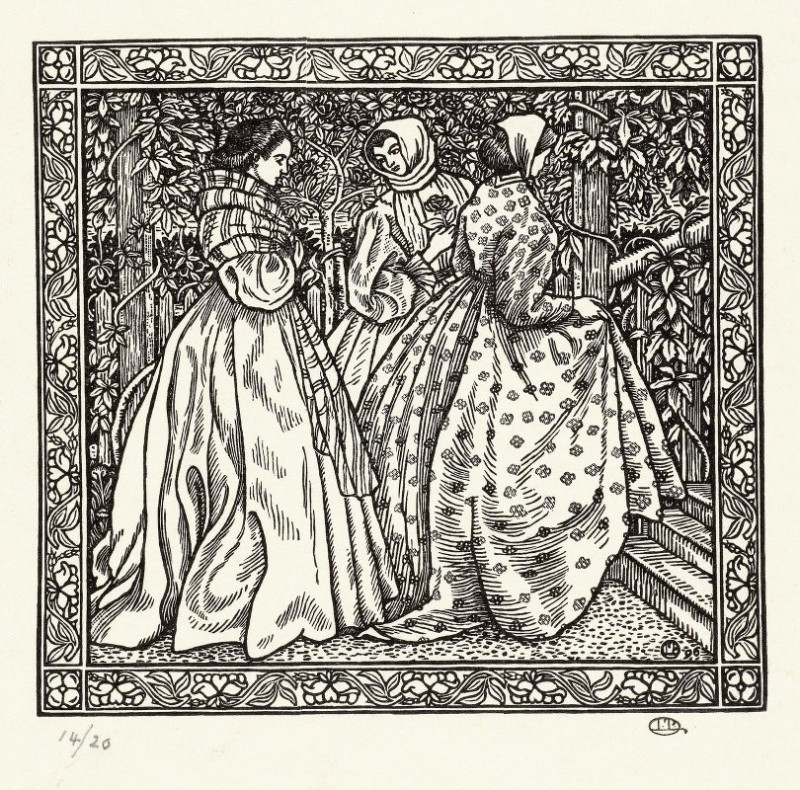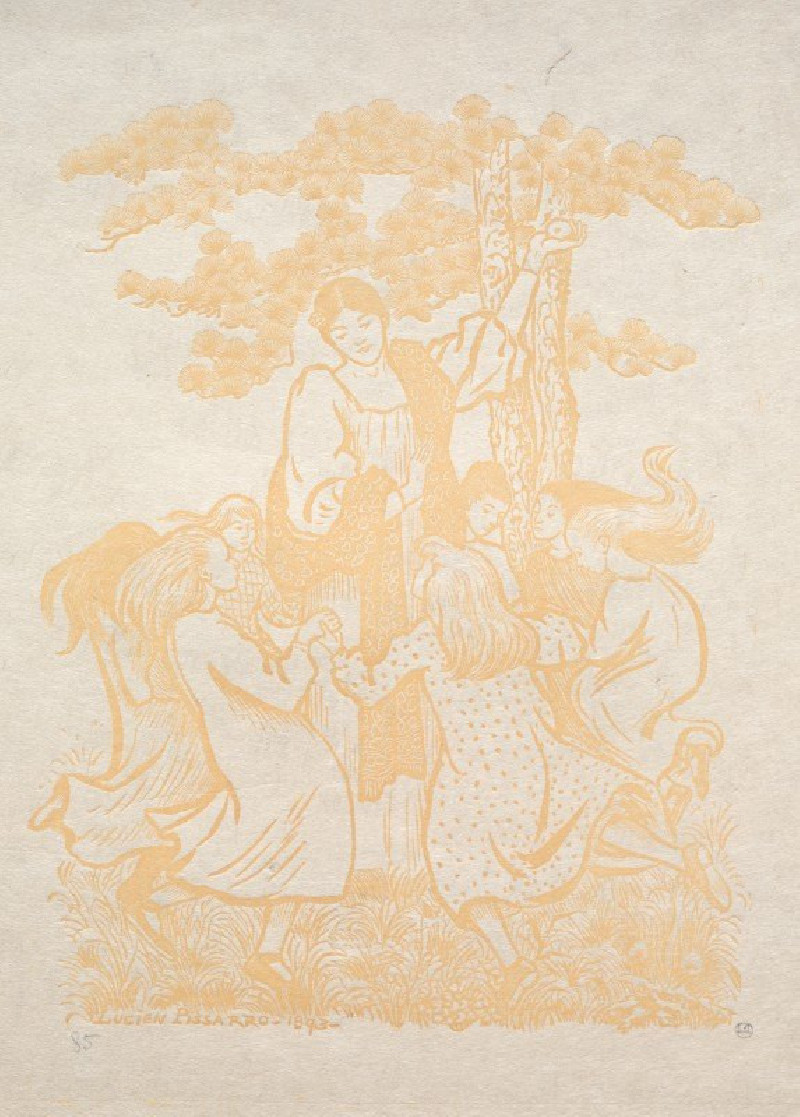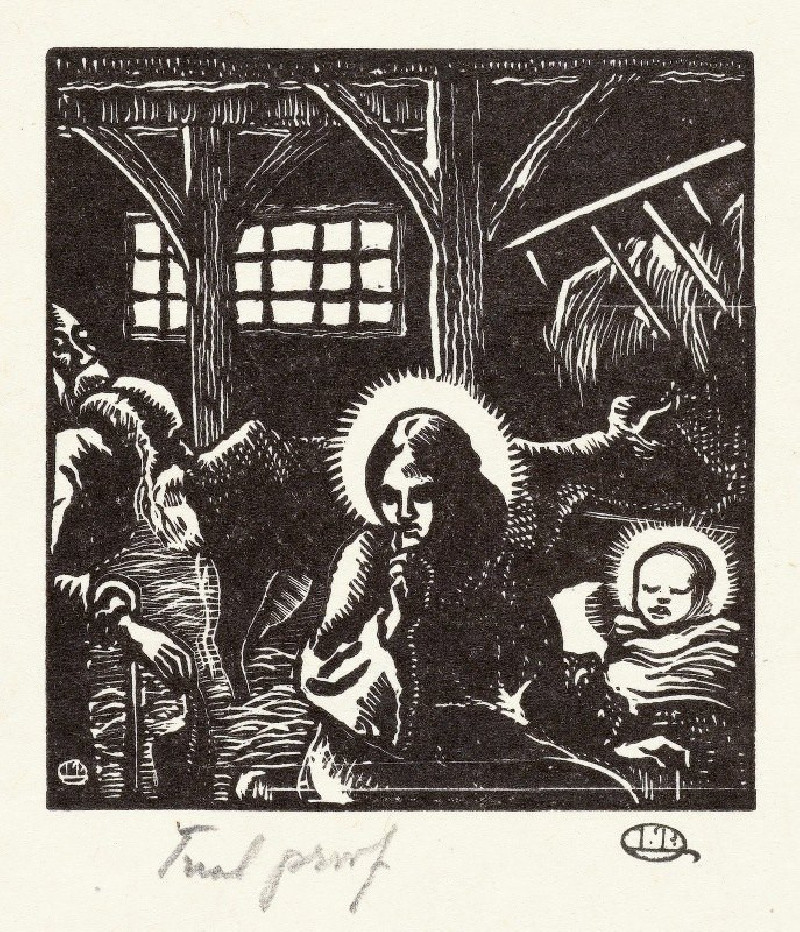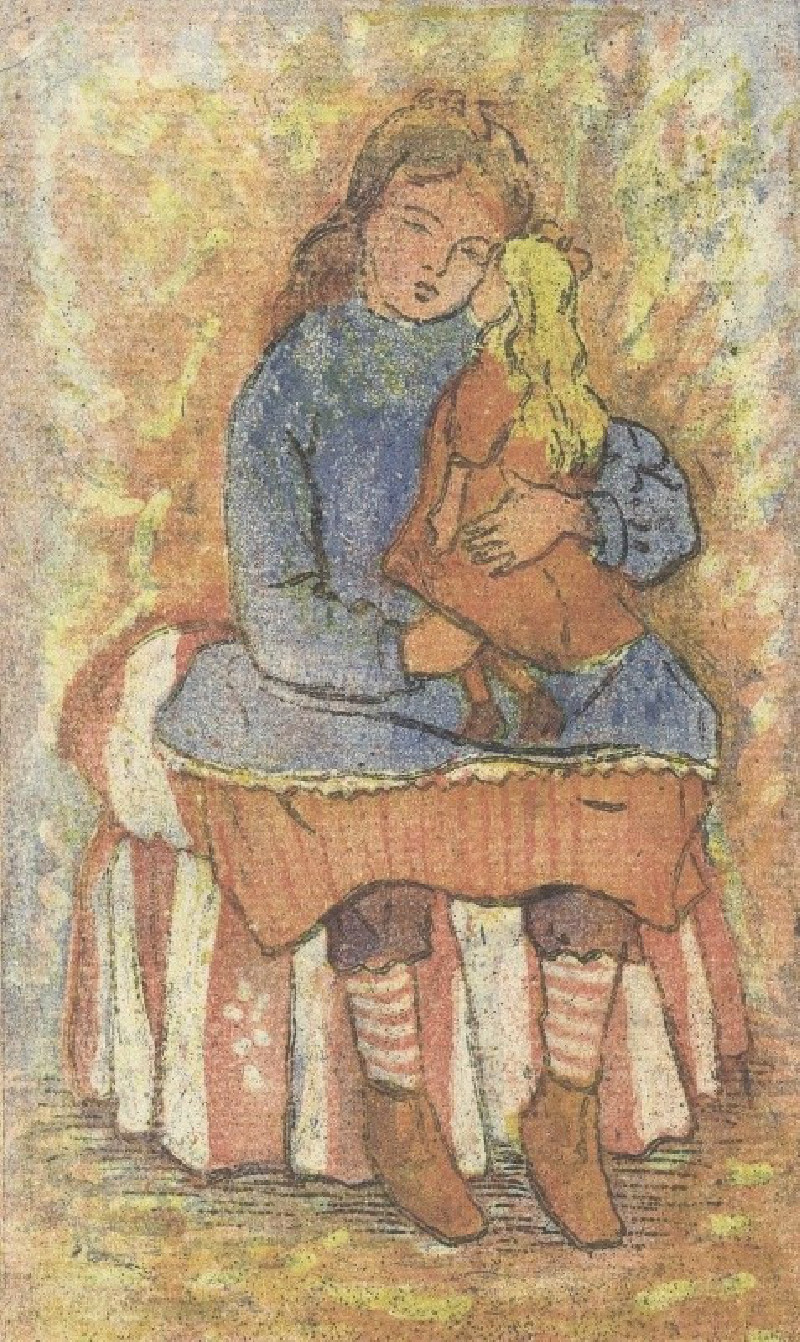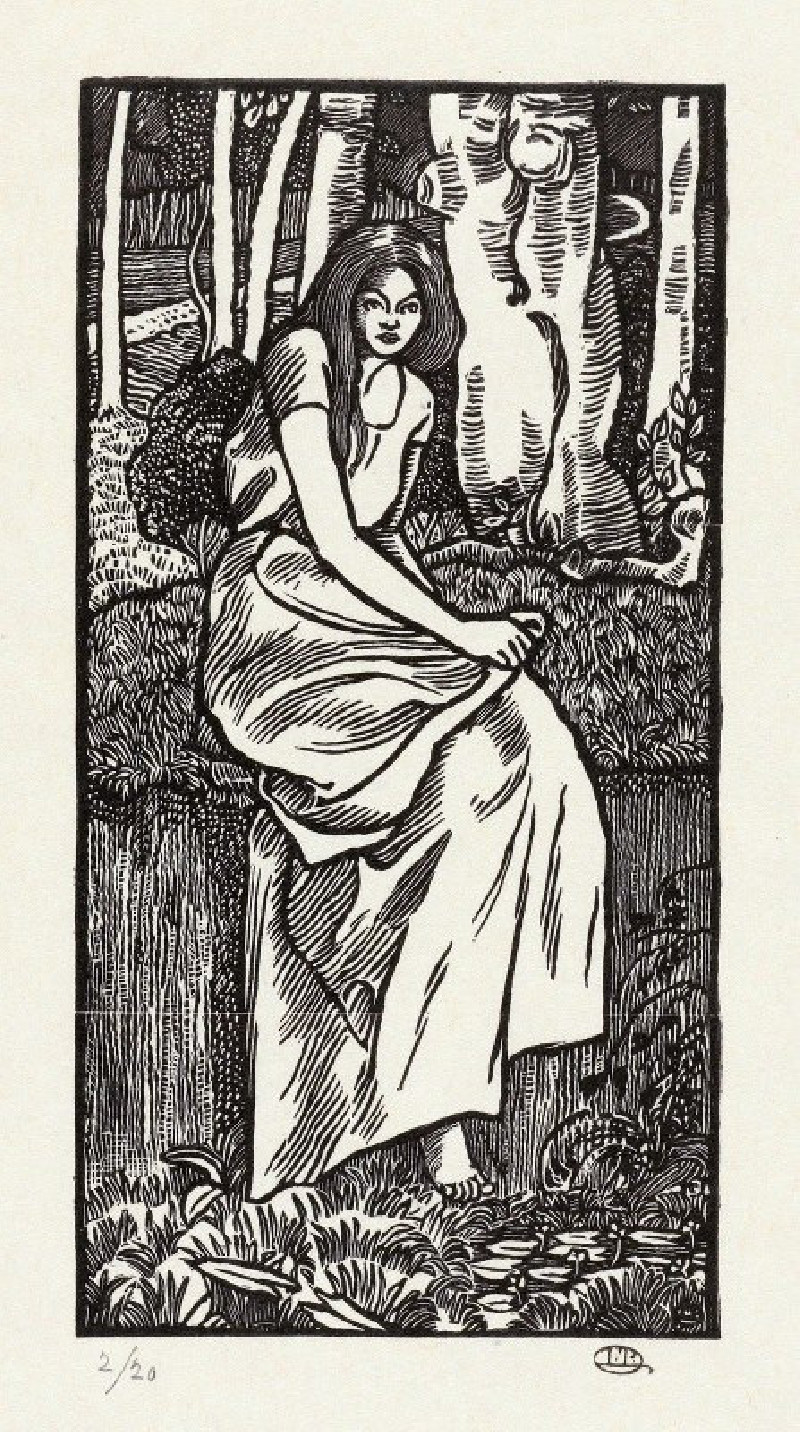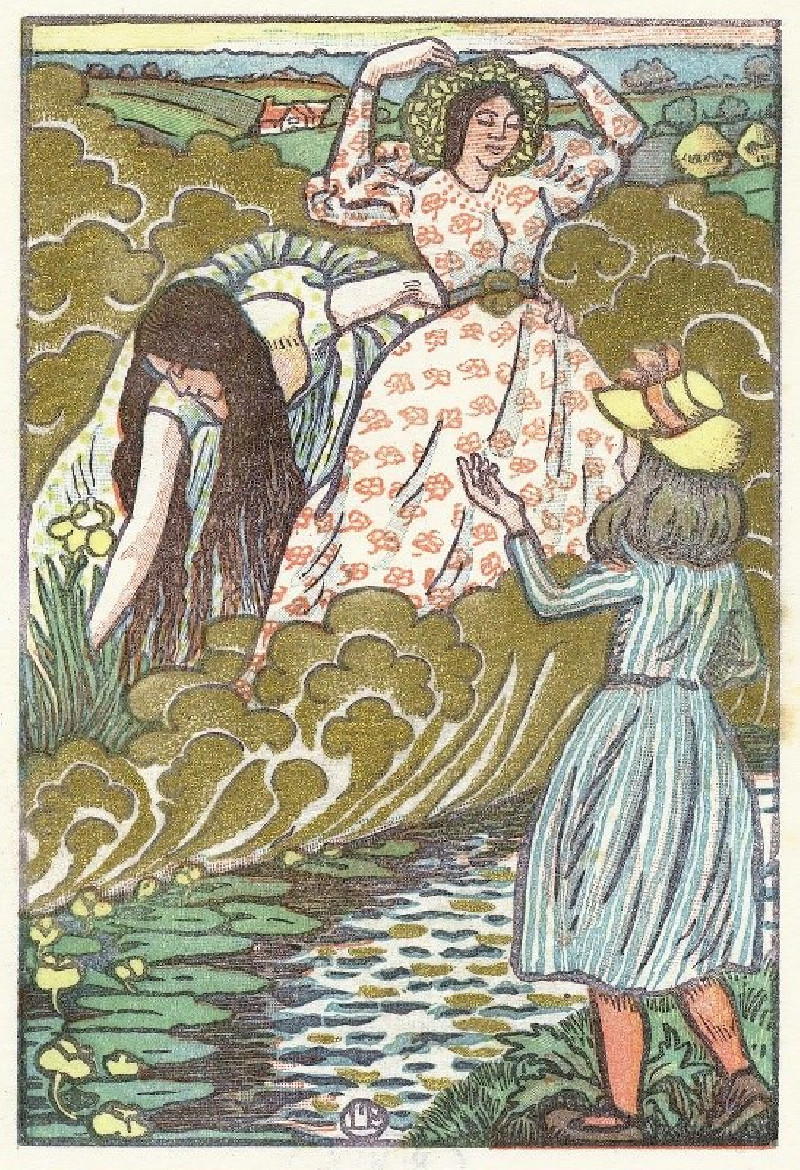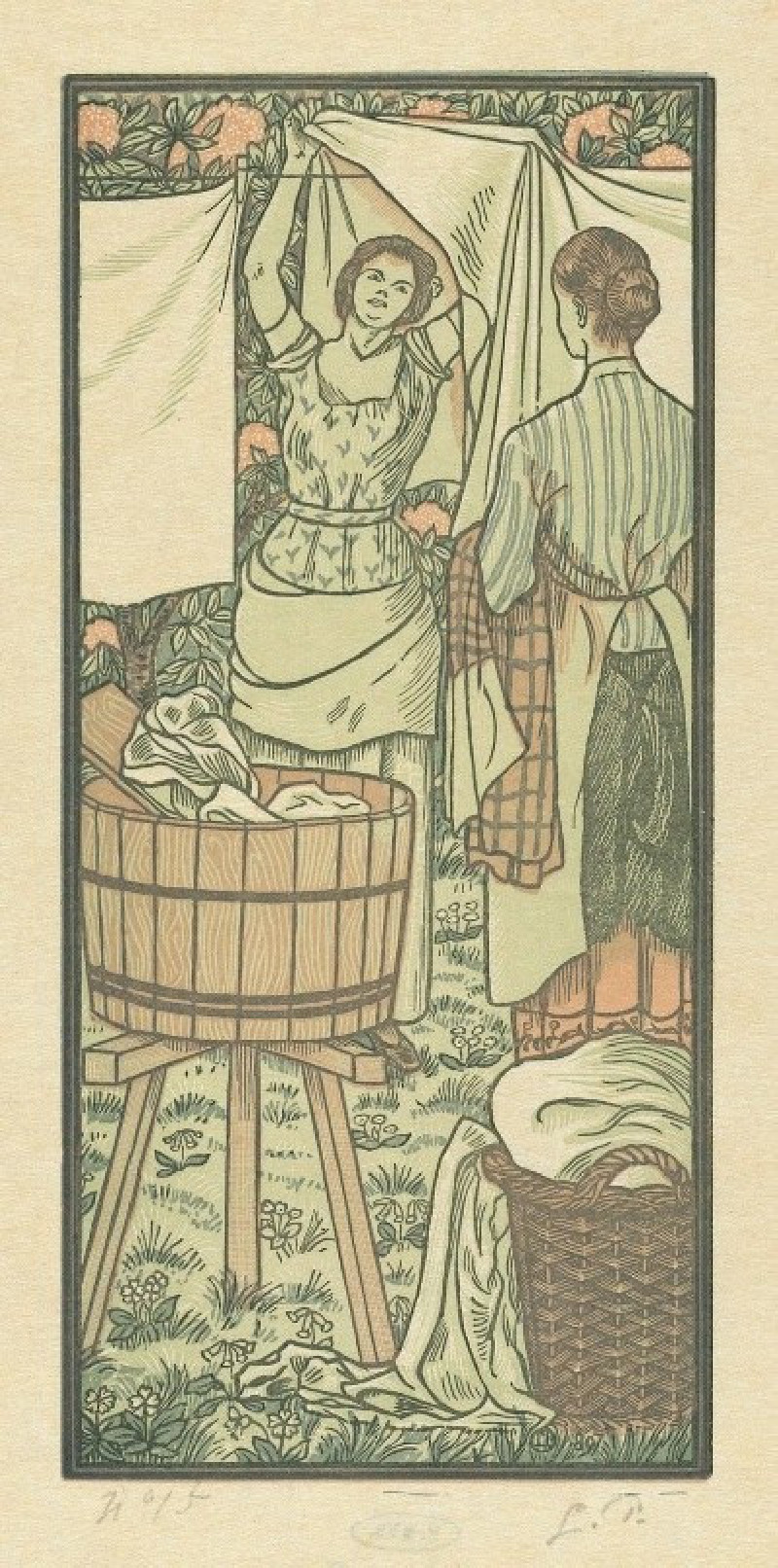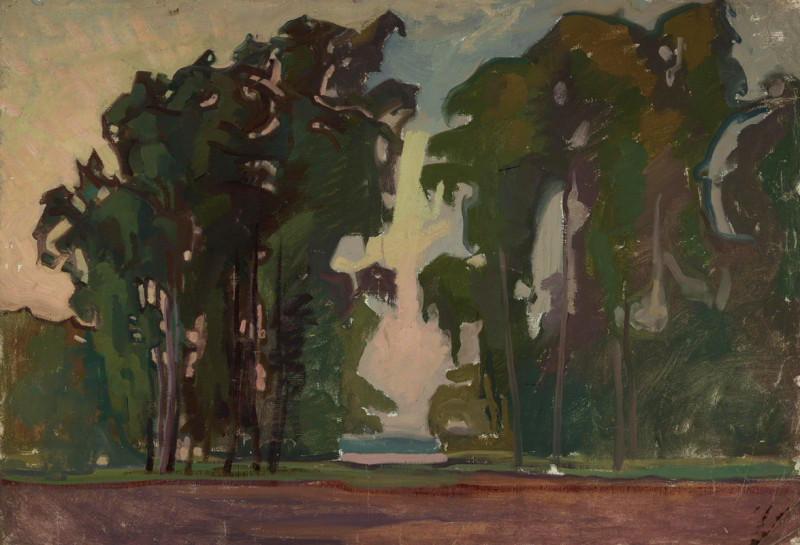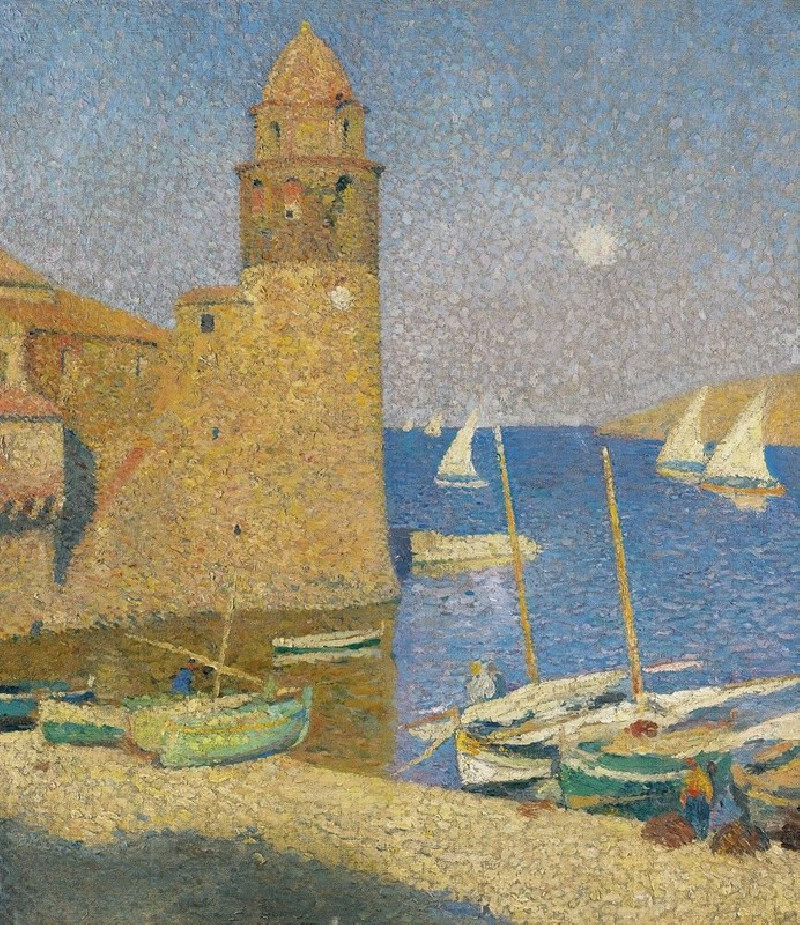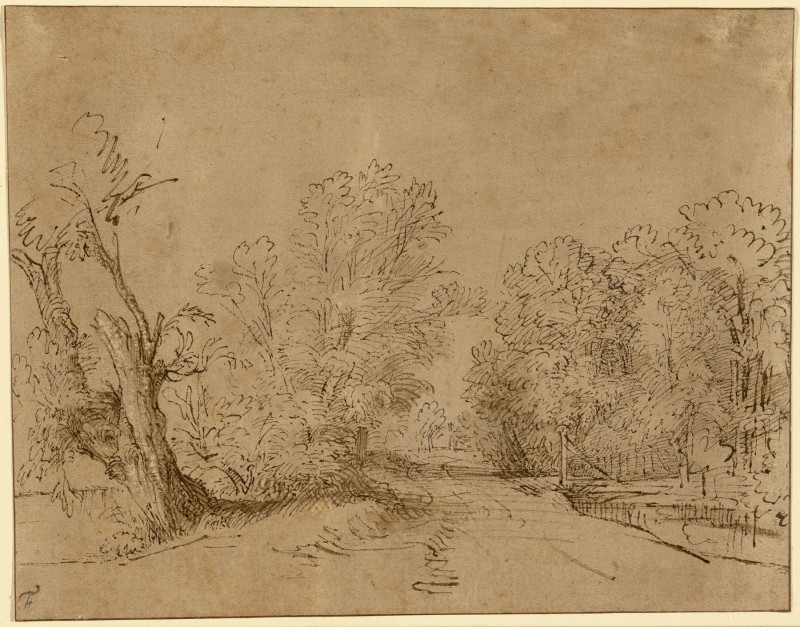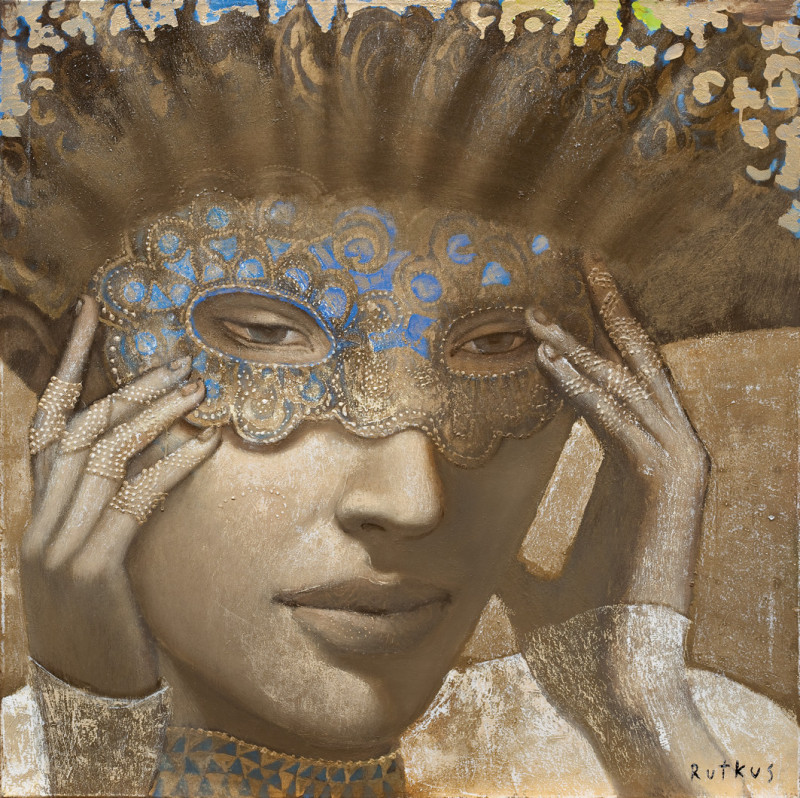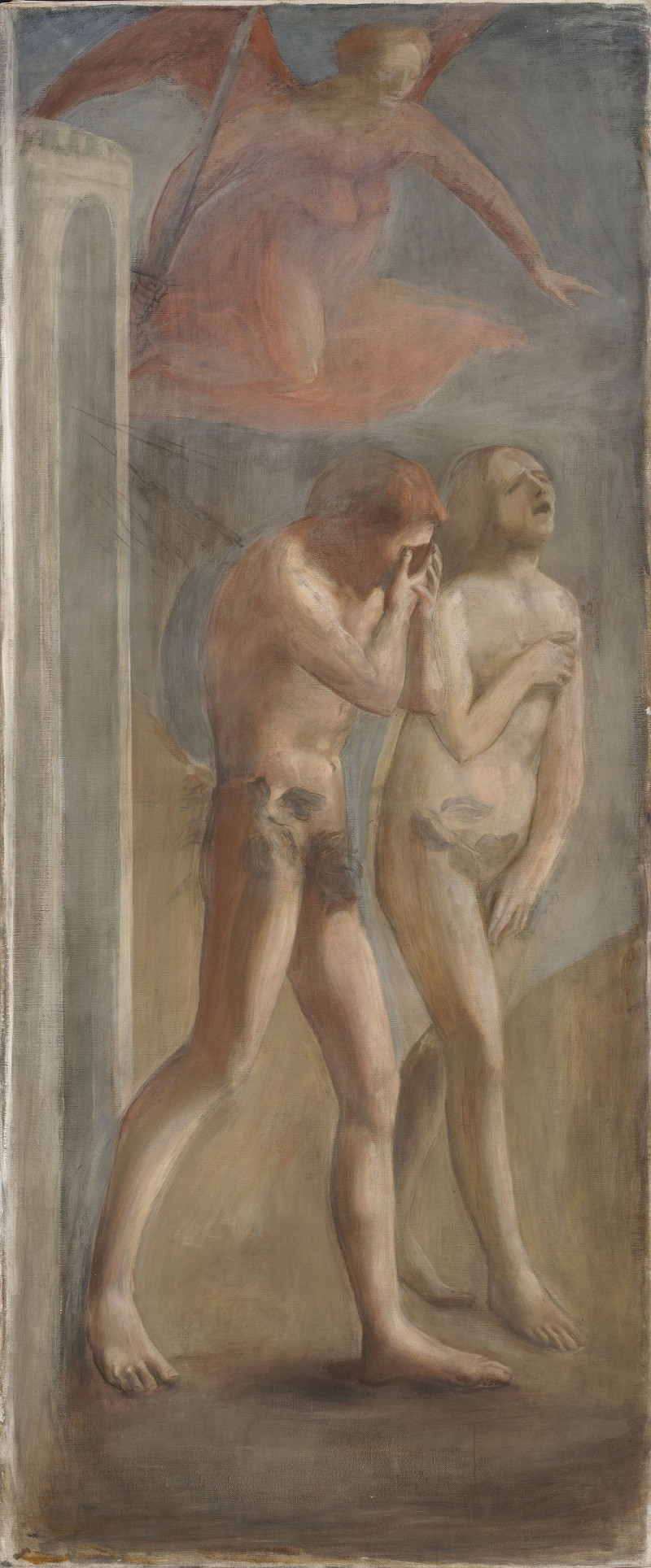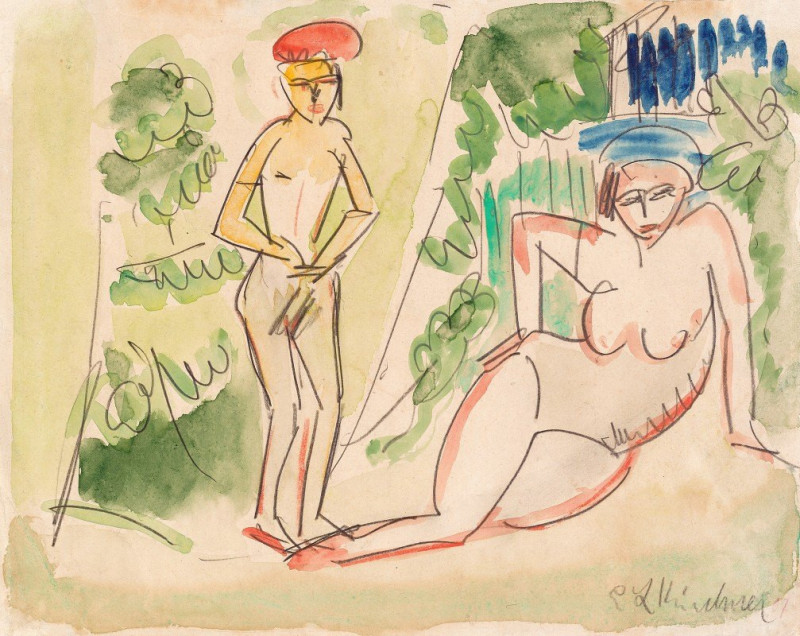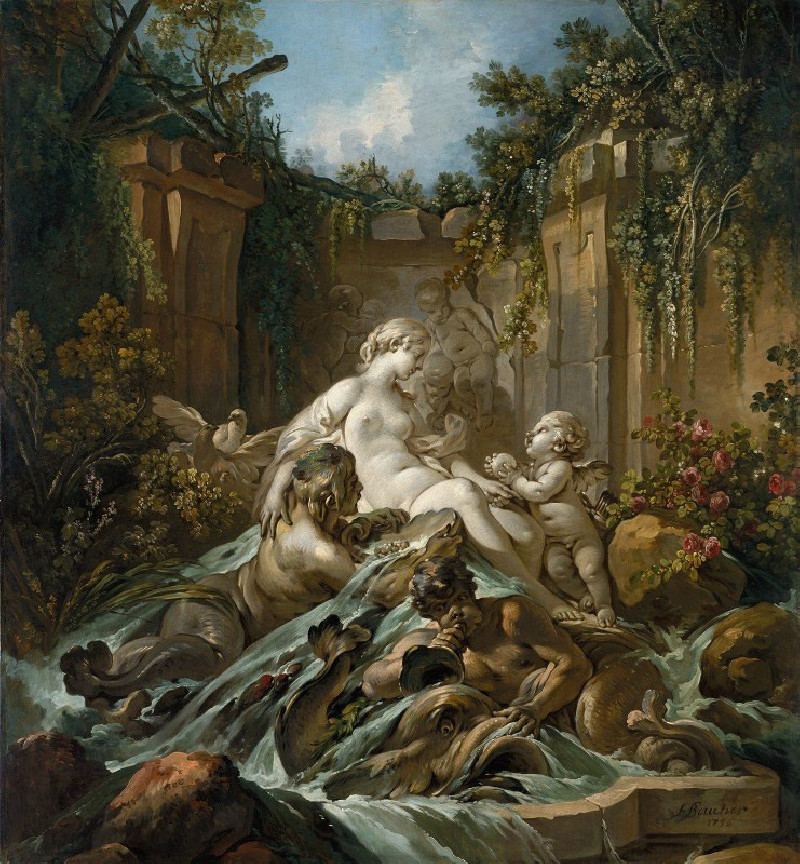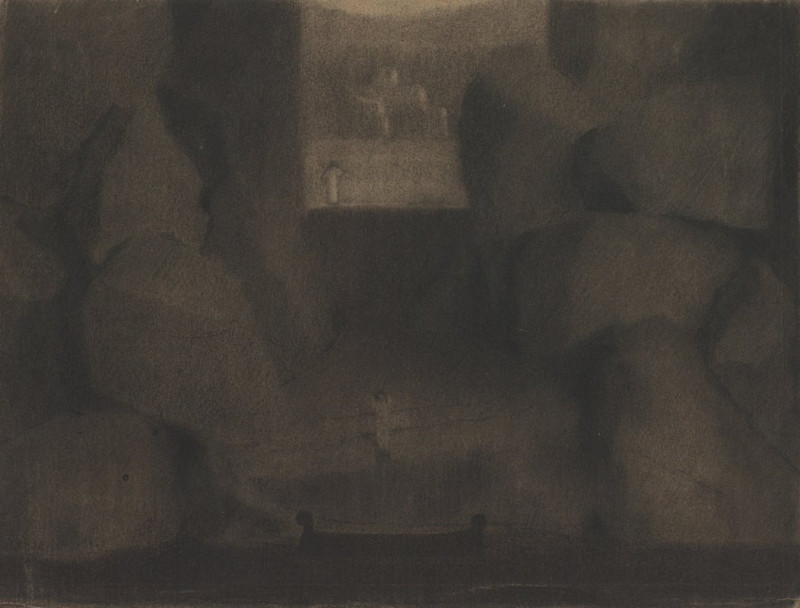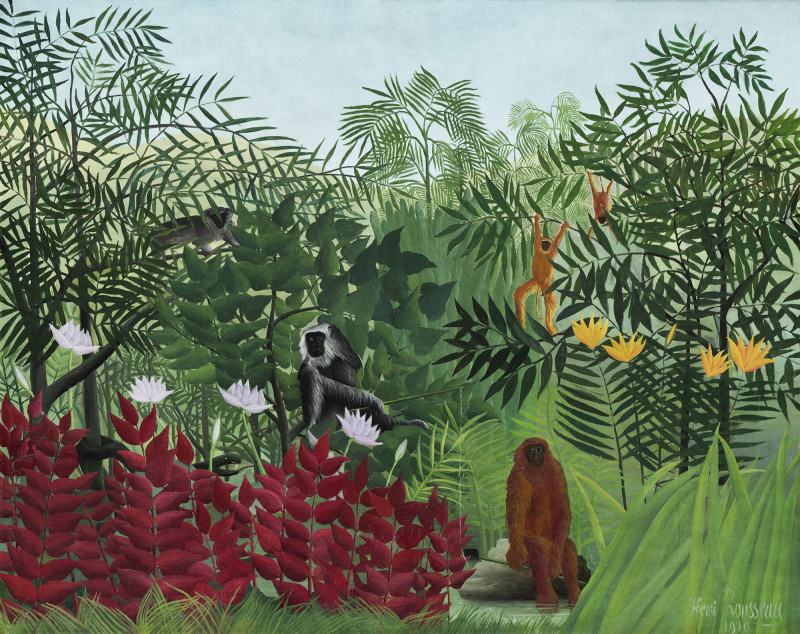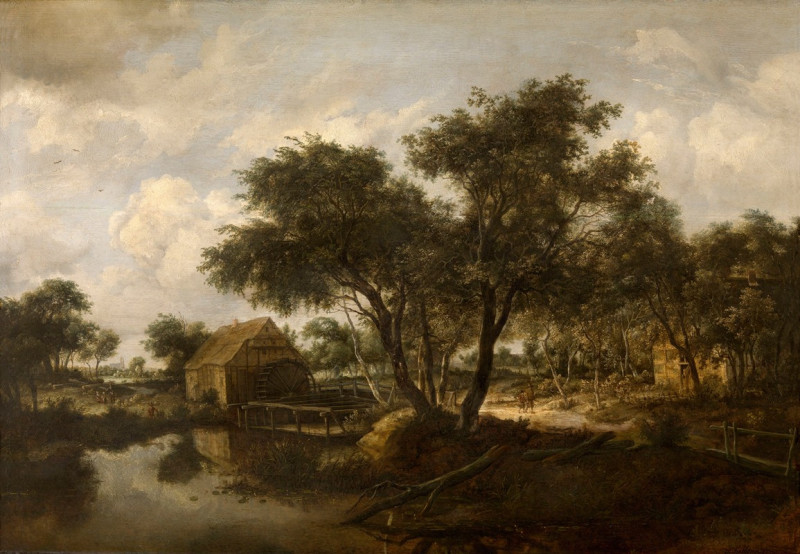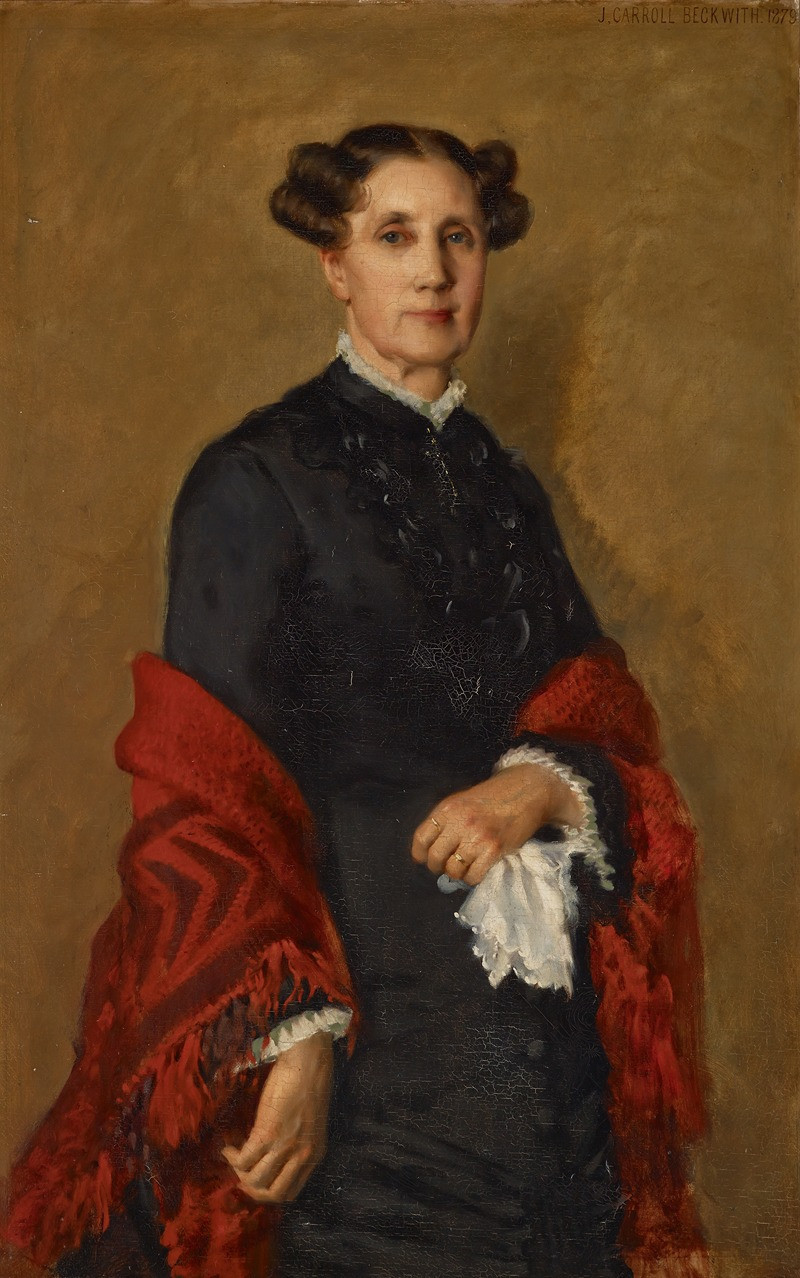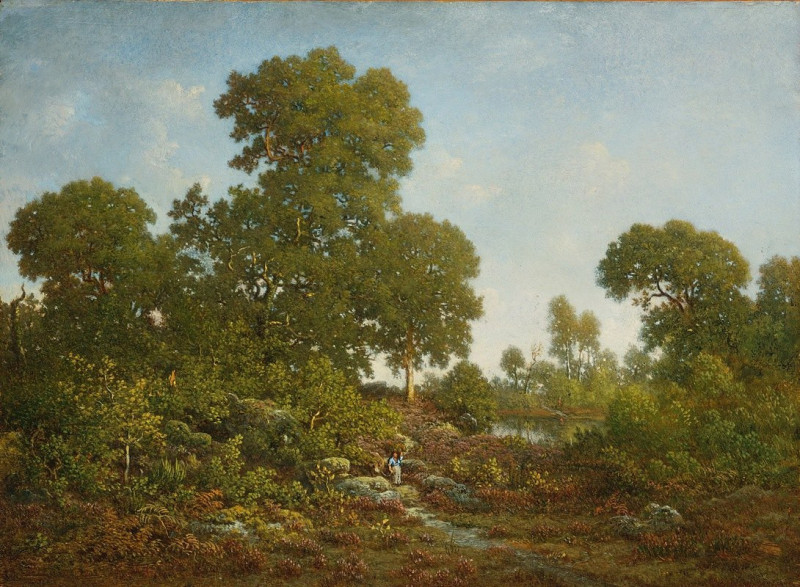Zittende Japanse vrouw (1911)
Technique: Giclée quality print
Recommended by our customers
More about this artwork
"Zittende Japanse Vrouw" (Seated Japanese Woman) by Lucien Pissarro, created in 1911, is a delicately crafted piece that embodies a serene and contemplative mood. The painting depicts a Japanese woman seated on the floor, enclosed in a circular frame that brings an intimate focus to the subject. The woman, adorned in a traditional kimono patterned with bold, floral designs, exudes a sense of quiet elegance and poise. Her pose, with legs tucked beneath her and her head slightly tilted, suggests a moment of repose or deep thought.Behind her, a hint of a bamboo-framed window suggests an indoor setting, possibly a traditional Japanese room, completing the cultural context of the picture. Pissarro's use of muted earth tones alongside green highlights not only underscores the tranquility of the scene but also harmonizes with the nature-inspired elements of the design.This artwork beautifully captures the fusion of French Impressionist influence and Japanese aesthetic principles, showcasing Pissarro's interest in and respect for diverse cultures and artistic styles.
Delivery
Returns
Lucien Pissarro was a landscape painter, printmaker, wood engraver and designer and printer of fine books. His landscape paintings employ techniques of Impressionism and Neo-Impressionism, but he also exhibited with Les XX. Apart from his landscapes he painted a few still lifes and family portraits. Until 1890 he worked in France, but thereafter was based in Britain.

